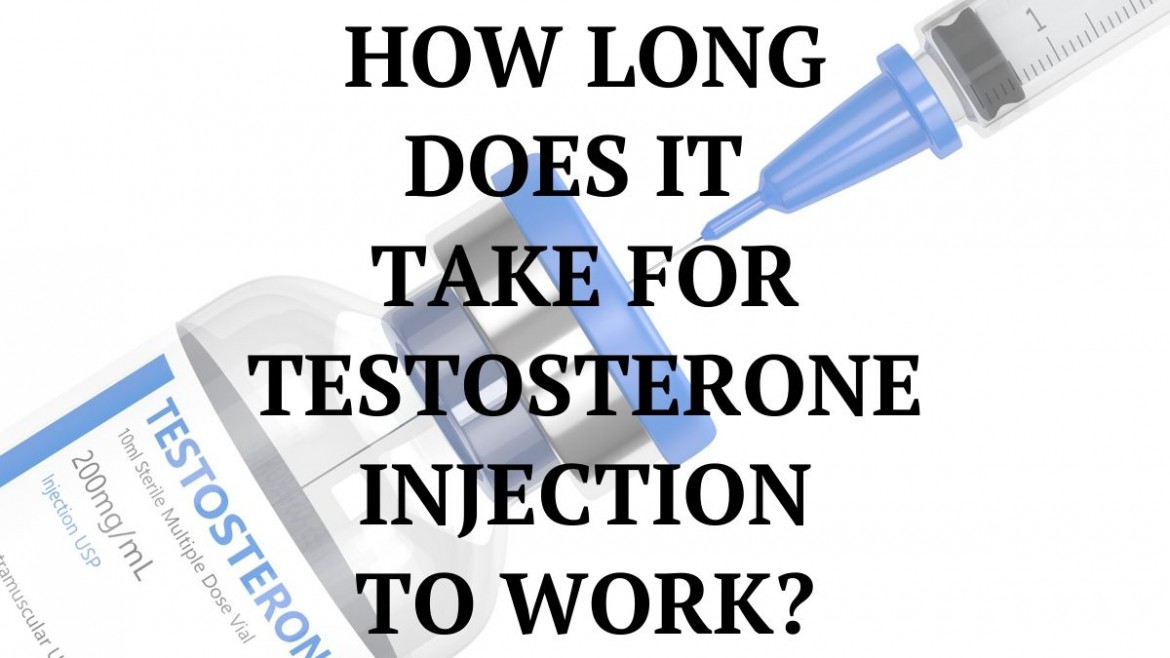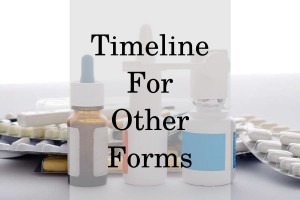In this article
Low testosterone (T) in men can lead to debilitating complaints that affect your mood, productivity and quality of life.
If you’re affected, then your doctor may suggest testosterone replacement therapy (TRT) to quickly alleviate your symptoms.
However, multiple factors will affect how fast you will improve. Examples include your age, lifestyle, comorbidities, dosage, and the form of TRT.
Furthermore, there is a different timeline for when to expect each benefit of TRT. Some symptoms will go away completely only after months of continuous treatment.
What effects to expect?
Usually, the first benefits of TRT include improved mood and libido. Better erectile function and cholesterol levels occur shortly after.
In a few months, you will also notice increased muscle mass and fat loss. The majority of patients also report improved quality of life.
Conditions such as anemia and osteoporosis due to low T will improve as well within the first 6 months.
Keep in mind that injections lead to the quickest rise in your T levels, almost immediately after application. Other forms of TRT may take longer to alleviate your symptoms.
It takes at least 3 weeks of therapy before you notice any benefits
Furthermore, clinical trials reveal that it takes several weeks or even months until you get the maximum of each effect.
Increasing your dosage at the start of the TRT can speed up the benefits. Therefore, your doctor will most likely apply your first couple of injections within a shorter time span compared to the remaining doses.
However, it is important to follow your doctor’s instructions and avoid changing your dosage without a consultation.
Increasing your dosage without medical supervision may lead to several side effects including acne, oily skin, infertility, gynecomastia, prostate hyperplasia, and high red blood cell count.
Sperm count and fertility decrease rapidly with higher doses of TRT. The fertility drops after the first month of treatment and the sperm can reach zero within 2-4 months of therapy.
The effect on red blood cell count usually occurs after 3 months of therapy and may lead to erythrocytosis, especially in older patients. This negative effect reaches its maximum at 9-12 months.
T leads to prostate enlargement and an elevation in prostate-specific antigen (PSA) levels. The most notable increase occurs after 6 months of therapy on average.
However, aging also contributes to these adverse reactions so there is no endpoint in these effects on the prostate.
When will testosterone injection start working?
According to scientific studies, improvements in libido and spontaneous morning erections can occur within 3 weeks of starting TRT, while the benefits for erectile function may reach their maximum after 9 weeks or longer.
Furthermore, the benefits on energy levels, depressive mood, and quality of life occur after 6-9 weeks of testosterone therapy. You may have to wait 12 weeks in total for the maximum benefit.
If you have hypogonadism, testosterone will have a beneficial effect on your lipid profile as well which occurs after 2-3 months of therapy. Trials outline that there is a notable decrease in LDL and triglyceride levels. The maximum benefits of TRT on cholesterol occur after 12 months.
The benefits of TRT on lipid profile will also improve your cardiovascular health. Moreover, a study suggests that TRT can improve the ischaemic threshold in patients with heart disease.
Effects on body composition such as fat loss and muscle gain begin after 3-4 months of therapy
You may also experience improvements in endurance, strength, and physical performance which reach a maximum after 6-12 months.
Last but not least, it takes at least 6 months before there is an increase in bone mineral density. A clinical trial reveals that the period is sufficient for a 5% increase in spinal bone mass on average. The maximum effect takes 2-3 years of TRT.
FDA-approved injections include testosterone cypionate, undecanoate, and enanthate
Testosterone esters differ in regards to their half-life and effects on serum T levels. However, they all lead to a supraphysiological increase of the T levels in your system since the first day of therapy.
Therefore, the time it takes to work will depend on your dosing regime rather than the form of injectable T.
Timeline of testosterone effects for transgender patients (FTM)
In the case of gender-affirming TRT, the effects of the therapy occur much slower. Your doctor will likely start with a lower dose and then progressively increase it over time.
Female-to-male (FtM) patients will first experience changes in their menstrual cycle. The monthly bleeding should stop within 2-6 months of therapy.
After 3 to 12 months of therapy, you will also notice that your voice is getting deeper and your clitoris enlarges. It takes up to two years until these effects reach their maximum.
The process of masculinization also involves an increase in facial and body hair, as well as a reduction in body fat. These effects occur within 3-6 months of TRT onset and reach their maximum within 2-5 years.
The changes in muscle mass and strength occur later – after 6-12 months of therapy. Once again, it takes 2-5 years to achieve the maximum effect possible.
What about other forms?
Apart from injections, other forms of TRT involve the use of pills, gels, patches, and pellets. Their absorption rate, bioavailability, or both is usually much lower when compared to injections.
That’s why the benefits of the therapy occur slower compared to injectable T.
Testosterone in the form of pills is first metabolized by the liver before it reaches your system which creates a risk for liver damage.
This process reduces its bioavailability down to 7% according to trials. Thus, oral forms of TRT take longer to achieve target serum T levels and alleviate the symptoms of hypogonadism.
Testosterone gels and patches have better availability and no risk for liver problems. However, they are harder to dose since transdermal absorption varies a lot between individuals.
Therefore, it may take longer until your doctor finds the correct dosage to manage your complaints.
Testosterone pellets must be implanted under the skin, where they will slowly release T into your system for months. They have great bioavailability, but the slow release of the medications prolongs the timeline of its benefits.
How long does testosterone stay in your system?
According to studies, enanthate is the fastest acting T form out of the 3 esters. It leads to supraphysiological doses immediately after an injection.
The levels of testosterone remain elevated for 4-5 days which is the half-life of the medication. Then serum T levels slowly decline in the next 5-6 days.
Since the medication is applied every 1-2 weeks, T levels may drop right before the next injection.
This can cause negative experiences due to hormonal fluctuations – fatigue, mood swings, and low libido. Some amounts of enanthate can remain in your system for up to 3 weeks.
Testosterone undecanoate also increases serum T levels since the first day of therapy but stays in your system for much longer.
The levels of T remain stable for up to 45 days after injection and then slowly decline. Therefore, undecanoate can also provide quick management for your symptoms, with a lower risk for hormonal fluctuations. It should be injected every 10-12 weeks.
In terms of half-life, cypionate works as a middle ground between the other two esters. The levels remain at their peak for about 8-10 days and then decline slowly for another 10 days. Traces of cypionate can remain in your system for up to 6 weeks.






